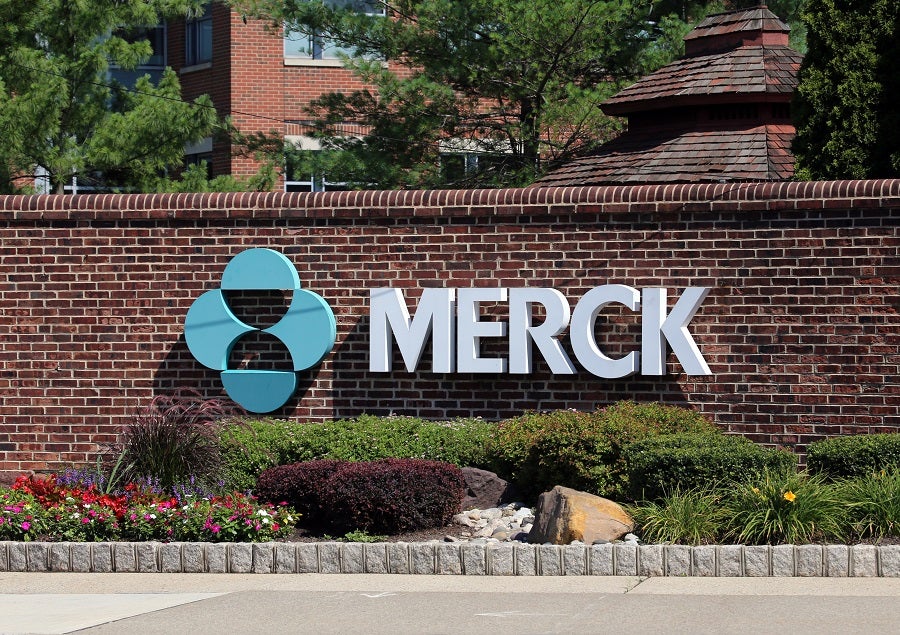Merck announced on November 21 that the company has agreed to acquire Imago BioSciences, a clinical-stage biotech developing the lysine-specific demethylase 1 (LSD1) inhibitor bomedemstat for the treatment of myelofibrosis (MF). Bomedemstat has several regulatory perks which makes it an attractive acquisition target, such as FDA fast-track and orphan drug designation. Merck will pay $36 per share in cash, totaling to $1.35 billion in equity, and thereby broaden the company’s hematology portfolio by providing an opportunity to enter the burgeoning MF market. This marks the second acquisition exceeding $1 billion for an MF-targeted therapy, the first of which occurred in June 2022 when GSK acquired Sierra Oncology for their primary asset momelotinib, leading to Merck and GSK going head-to-head in an increasingly competitive market.
MF is a rare and progressive form of blood cancer characterized by excessive production of blood cells and scarring of the bone marrow, causing patients to experience debilitating symptoms such as anemia, enlarged spleens, and risks of defective blood clotting. JAK inhibitors (JAKis) are the only approved targeted therapies to treat MF, with Incyte’s Jakafi/Jakavi (ruxolitinib) dominating as the standard of care. However, JAKis are inadequate to control disease progression into advanced stage MF or acute myeloid leukemia (AML), leaving a huge unmet need for novel therapeutic approaches which can mitigate disease progression.
Imago recently reported highly promising clinical data evaluating single-agent bomedemstat for treating MF in July 2022. The Phase I/IIb trial (NCT03136185) results indicated that 64% of patients receiving single-agent bomedemstat achieved spleen volume reduction (SVR) by 24 weeks, with 6% achieving a decrease of at least 35%. These results are inferior to Jakafi/Jakavi which shows an SVR above 35% in 41.9% of patients according to the COMFORT-I study. However, where bomedemstat has a competitive edge is by reducing disease symptom burden and progression in patients that have advanced receiving JAKis. 55% of all patients receiving bomedemstat (n=51) achieved a total symptom score (TSS) reduction, 22% of which experienced above 50% TSS reduction. Of 26 evaluable patients with high symptom burden, 65% experienced a decrease in TSS at 24 weeks, 19% of these patients experienced a decrease of at least 50%.
Patients with advanced MF have especially poor outcomes, such as severe anemia resulting in blood transfusion dependence, and therapies that can improve quality of life or curtail further progression will have high clinical utility. Importantly, 52% of the 21-blood transfusion-dependent patients receiving bomedemstat were either stable or showed reduced transfusion burden by 24 weeks. It was also reported that 85% of patients experience significant reductions in bone marrow fibrosis, indicating mitigation of disease progression.
Regarding safety, the most common toxicities reported included thrombocytopenia (any grade, 48%; grade 3/4, 41%), dysgeusia (any grade, 36%), diarrhea (any grade, 33%), anemia (any grade, 34%; grade 3/4, 22%). The safety profile is acceptable considering that 53% of these patients had high-risk MF where thrombocytopenia and anemia are common symptoms. Bomedemstat did not appear to significantly worsen the anemia, unlike JAKis which are well known to exacerbate anemia. This may open the door to combination therapies with JAKis; a combination therapy harnessing bomedemstat’s potentially disease-modifying activity and anemia efficacy with an agent to control SVR could show enormous clinical potential.
See Also:
However, 49% of patients experienced serious adverse events (SAEs), the most common of which were cellulitis, diverticulitis, and pneumonia, putting bomedemstat’s promising safety profile into question. Other combination therapies with Jakafi/Jakavi are also being explored, such as Morphosys’ bromodomain and extra-terminal (BET) inhibitor pelabresib, which is being evaluated in a Phase III MANIFEST-2 trial, with the view to improve patient outcomes on Jakafi/Jakavi from first treatment initiation by exploiting pelabresib’s anti-anemia efficacy to delay the onset of Jakafi/Jakavi-induced anemia.
How well do you really know your competitors?
Access the most comprehensive Company Profiles on the market, powered by GlobalData. Save hours of research. Gain competitive edge.

Thank you!
Your download email will arrive shortly
Not ready to buy yet? Download a free sample
We are confident about the unique quality of our Company Profiles. However, we want you to make the most beneficial decision for your business, so we offer a free sample that you can download by submitting the below form
By GlobalDataOverall, these results demonstrate a distinct and promising efficacy profile for single-agent bomedemstat that can significantly improve the patient’s quality of life, moderately control anemia, and potentially reduce disease progression in a large proportion of patients that have undergone several lines of therapy on JAKis and have limited treatment options. Most patients receiving Jakafi/Jakavi progress and develop anemia, resulting in a relatively large patient population that could benefit from bomedemstat, but not for patients with enlarged spleens which often serves as a critical clinical decision factor and is observed in about 40% of patients.










Related Company Profiles
Merck & Co Inc
GSK plc
Incyte Corp
MorphoSys AG
Sierra Oncology Inc